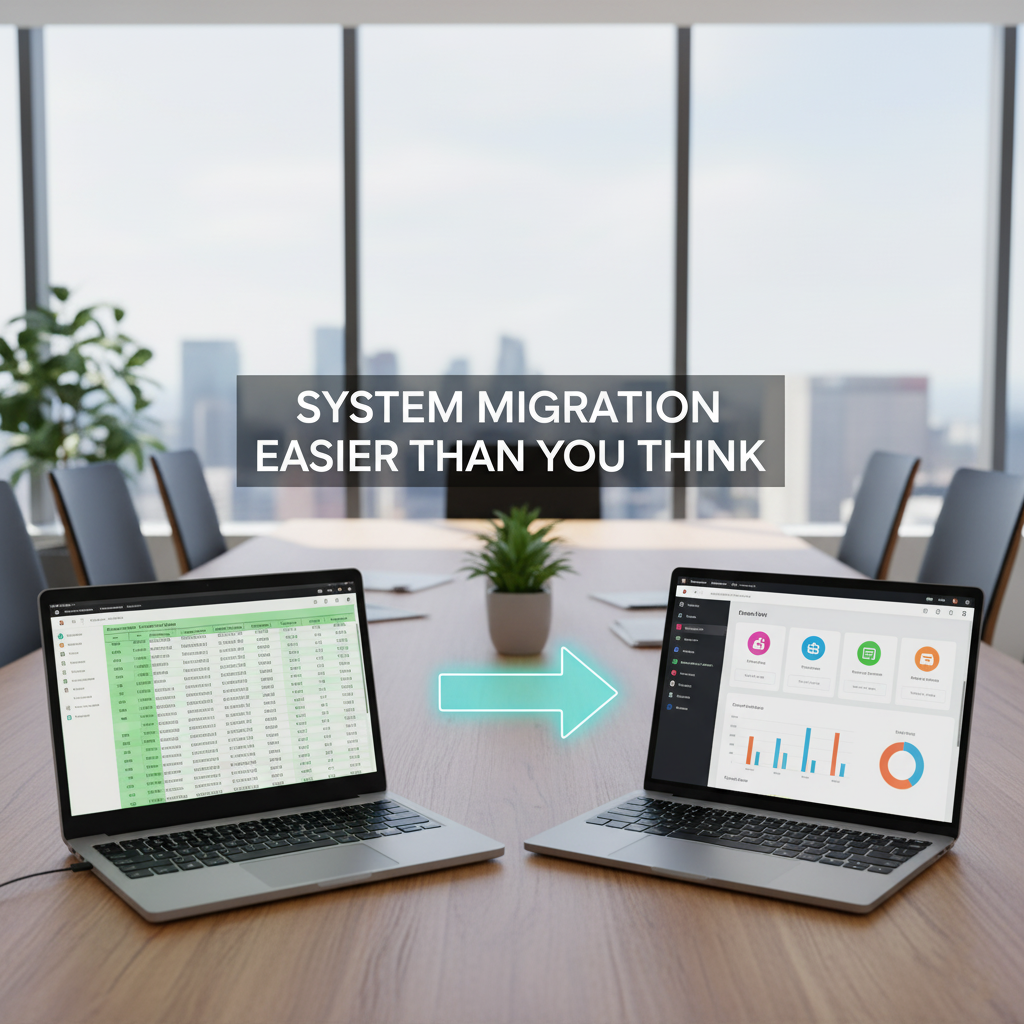Current payroll software not working for you? Maybe you need something that can scale with your growing business, or maybe you want an all-in-one payroll software that handles rostering and timesheets as well?
Whatever the case, switching payroll providers can help you save time, reduce compliance issues, and boost efficiency. And while it can seem a bit daunting, moving to a new payroll system is easier than you think. With our comprehensive guide, you’ll learn how to effectively change your payroll software and keep disruptions to a minimum.
Why should you consider changing your payroll system?
If you’re still on the fence, some common reasons to switch payroll providers include:
- Outdated technology: If you haven’t updated your payroll software since you started your company, it might not integrate with other new software or even meet the current requirements for payroll systems—especially if you’re using self-hosted rather than cloud-based payroll software.
- All-in-one functionality: Combining your payroll management with rostering, employee self-service, and benefits administration can save time and avoid errors that result from using multiple systems.
- Scaling up your business: Your company has grown; now it’s time for a new payroll system that can match. More employees, more money, and more locations mean the need for a dedicated payroll solution that handles complex company structures without being difficult to use.
- Frequent errors: As a business, you’ve got many people to please. Messing up your tax compliance can have the tax department knocking at your door, while missing a payday can leave employees scrambling in their personal lives. If your current payroll system frequently causes issues, it’s time to switch to a new one.
- High costs: Does your current payroll provider offer good value for money? If there are other systems that offer more features at a lower price, it might be worth switching over to something else.
How to switch payroll providers in four easy steps
1. Review your current provider’s policies
Before you jump into changing payroll providers, it’s important to double-check what your current payroll provider has to say. Some payroll companies have contractual policies around leaving early, and you don’t want to be left paying a large exit fee when you switch. If your current system requires a notice period, you’ll need to plan your payroll software transfer in advance.
2. Choose a new provider
Do you know what you actually need from your new payroll software? There are dozens of payroll systems out there, so you’ll want to look around carefully to find the right choice for your business. Some payroll software providers even specialise in systems for large corporations or small businesses.
While you’re looking into changing payroll software, ask yourself these questions:
- What features do you need—and what features will you need as your company grows?
- Will you require technical support for payroll processing?
- Does the payroll system’s pricing system work for you? How about the fees and hidden costs?
Remember to read customer reviews and ask the company for a demo if they offer one. At BizEx, we provide a free demo of our BizPay payroll solution so you can get familiar with the software and see if it’s the right fit for your business.
3. Gather current data
Once you’ve chosen a new platform, you’ll need to request historical payroll data from your old payroll provider. Things to transfer include:
- Employee details: Employee name, start date, tax code, pay rate, IRD number (NZ) or TFN (AU), KiwiSaver (NZ) or super (AU) details.
- Leave balances: Gross earnings, annual leave due, alternative leave, sick leave.
- Pay history: Earnings, hours worked, days worked.
4. Run a parallel pay
Now, you’ll have to run a parallel pay over the next three paydays. Running a parallel pay, or the same pay on the new and old system at the same time, allows you to identify any issues with the new system that you might need to address.
Payday 1
Use the old software to run a pay. After that, export your employee data from the old system into a spreadsheet. You can ask your previous provider for assistance if needed. Then, import the data into your new payroll system. You can also use manual workarounds to enter data, but this is a complicated option that takes longer.
Before or during this time, you should also inform employees that you’re changing payroll software and explain how to use the new system.
Payday 2
Use the old system to run payroll as usual. Recreate the pay in the new system and carefully review the setup. Mark the pay as sent so that the payslips won’t be emailed to employees. This lets you check your new system for errors before you fully switch over at the start of the next pay period.
If you’re having any issues, your new provider should be able to help with the move. BizEx offers comprehensive training and assistance to ensure that your new system is safely set up so that you won’t run into troubles before your first payroll run.
Payday 3
It’s finally time to switch payroll software for good! Connect your new system to Inland Revenue (New Zealand) or the Taxation Office (AU) and any other integrations. Set up your payment method and inform your employees about the move. Now that you’re fully onboarded, you can safely send a live pay using the new system.
Quick fixes for common payroll migration issues
Sometimes, it’s not all smooth sailing when you switch payroll companies. That’s okay; here are some common issues you might encounter when using your new provider and how to overcome them:
- Resistance to change: If your new system includes an employee self-service function, it’s essential to organise a dedicated training session for the staff before your parallel payroll run so that everyone knows how it’ll work.
- Data migration errors: Having trouble moving your data from the old system to the new? Contact your new provider for assistance before you run payroll.
- Unexpected costs and delays: If your new provider has a free demo, be sure to take advantage of that first so you’re fully familiar with the software. And if it takes longer than you’d expect, don’t fret—you can switch payroll providers at any time of the year, so it’s better to get everything sorted out first before you rush to change.
When should you move to a new payroll software?
New Zealand and Australia both require companies to file employee payroll information to the government on or near each payday. This means that it’s easy to switch to a new payroll system at any time, even when it’s not the end of the financial year. However, you might want to consider your business’s busy and quiet periods before you change systems. Read our guide on changing payroll systems in the middle of the tax year for more information.
Ready to upgrade your payroll?
Switching up your payroll system can improve workplace efficiency and ensure compliance with tax regulations. While it can seem challenging at first, it’s much simpler than you’d expect, especially when you use a modern cloud-based payroll provider like BizEx.
BizPay cloud-based payroll is used by over 98,000 New Zealand and Australian SMEs. This all-in-one solution connects payroll, rostering, timesheets, and automated reporting while ensuring tax compliance. It’s suitable for all industries, including retail, hospitality, construction, manufacturing, and more.
See how BizEx can be the answer to your payroll problems. Talk to our payroll experts today and book a demo.



